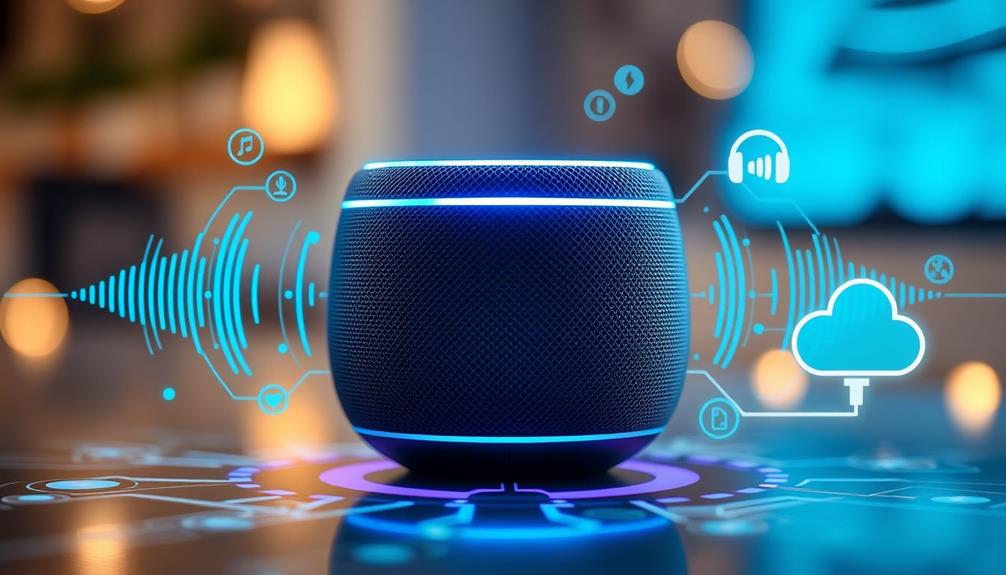Amazon's Alexa works by using cutting-edge technology that combines artificial intelligence, natural language processing, and machine learning. When you speak the wake word, Alexa's advanced microphones pick up your voice. It then processes your command through Amazon's servers, interpreting your intent and context for accurate responses. The device learns from interactions, improving its understanding of accents and speech nuances over time. Privacy considerations are key, as Alexa manages your voice data responsibly. If you're curious about how all these elements come together to enhance your experience, there's much more to uncover.
Key Takeaways
- Alexa utilizes advanced signal processing and seven microphones to enhance audio clarity and accurately detect wake words for user activation.
- The device employs artificial intelligence and natural language processing to interpret user commands and provide contextually relevant responses.
- Machine learning techniques improve Alexa's ability to understand diverse accents and dialects, enhancing user interaction accuracy over time.
- Contextual speech recognition adapts to user dialogue, filtering out background noise and retaining context for smoother conversations and follow-up questions.
- Privacy and ethical considerations are crucial, as voice data recording raises concerns about user autonomy and data security, necessitating user control over their information.
Overview of Alexa's Functionality
Alexa is like having a personal assistant right in your home. With just the wake word "Alexa," you can engage in a voice-activated user interface that makes your life easier. This innovative technology relies on artificial intelligence and natural language processing to interpret your commands accurately.
As a part of the growing trend in AI transformations in healthcare, voice assistants like Alexa are becoming more intuitive and responsive. When you speak, Alexa employs advanced speech recognition techniques to isolate your voice from background noise, ensuring that your requests are understood.
Once you activate Alexa, the device sends your voice command to Amazon's servers, where it processes the contextual information to deliver the right response. You can access a wide array of functionalities, including controlling your smart home devices, ordering food, or getting quick information.
With over 30,000 skills available, Alexa adapts to your needs, making it incredibly versatile.
To set everything up, you'll need an Amazon account and an Alexa-enabled device, such as an Echo. The Alexa app plays an essential role in linking your devices and services, ensuring a smooth integration into your daily routine.
Embrace the future of technology with Alexa, and enjoy the convenience it brings to your home.
Signal Processing and Wake Word Detection
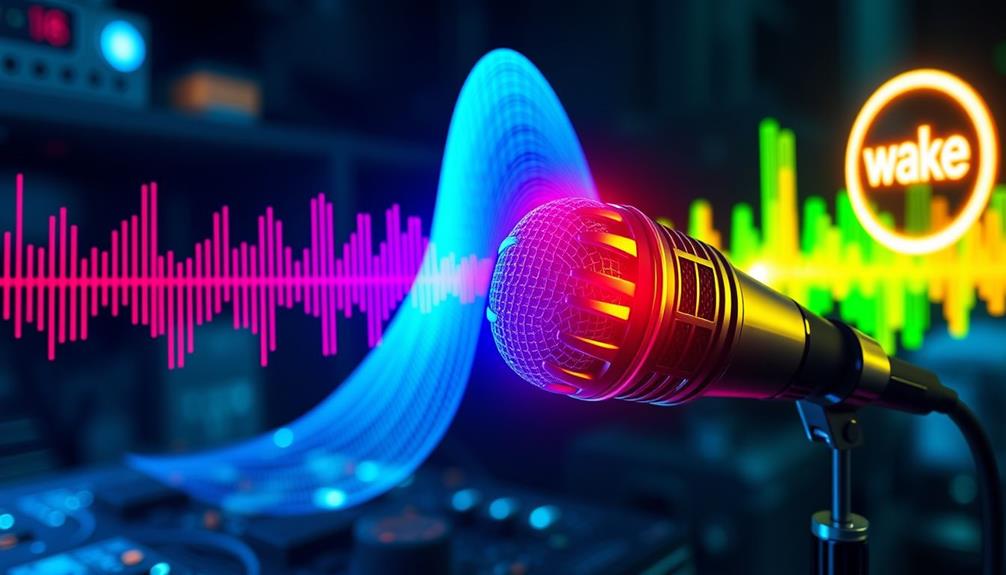
Voice assistants rely heavily on sophisticated signal processing and wake word detection to function effectively. Alexa uses advanced techniques, employing seven microphones to localize audio sources while minimizing ambient noise. This guarantees clearer voice recognition, allowing you to interact seamlessly.
The wake word detection system identifies specific phrases, like "Alexa," activating the device while reducing false activations. It employs acoustic echo cancellation to isolate essential audio signals from surrounding sounds, capturing your commands accurately. Once your voice is detected, the audio signals are sent to cloud-based speech recognition software, where they're converted into text for further processing.
Here's how these components work together:
| Component | Function | Technology |
|---|---|---|
| Signal Processing | Enhances audio clarity by reducing background noise | Machine Learning |
| Wake Word Detection | Activates the assistant upon hearing a specific word | Deep Learning |
| Acoustic Echo Cancellation | Isolates user commands from ambient noise | Advanced Signal Processing |
| Speech Recognition | Converts audio to text for interpretation | Cloud-based Systems |
Incorporating deep learning models, Alexa enhances the accuracy of wake word detection and command recognition, making your interactions with voice assistants more natural and efficient.
Natural Language Processing Techniques
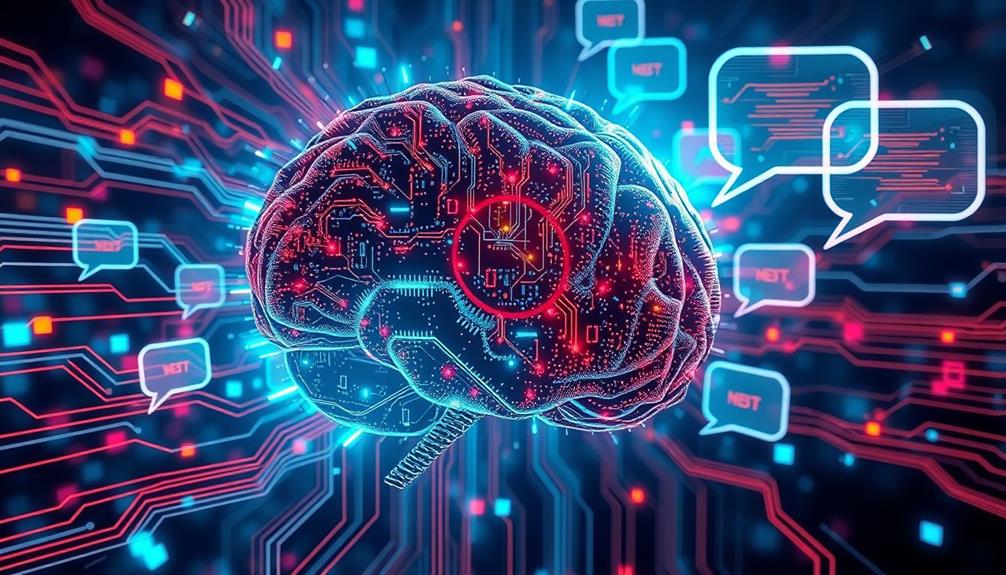
Natural Language Processing (NLP) techniques play an essential role in transforming spoken language into actionable commands, enabling seamless interactions. Through advanced speech recognition, Alexa can break down your commands into phonemes—these individual sound units are vital for matching sounds with words. This phoneme recognition is the first step in understanding what you really mean.
Additionally, developing strategies to mitigate small mistakes in communication can greatly enhance the accuracy of voice interactions, ensuring that users receive the correct responses. Curiosity drives creativity in understanding user intent, which is particularly important for voice assistants like Alexa.
With the help of machine learning, Alexa continuously improves its NLP capabilities by learning from your interactions. This means it gets better at understanding various accents, dialects, and sentence structures over time, enhancing accuracy and making your experience smoother.
Natural Language Understanding (NLU) goes a step further by interpreting user intent, allowing for more conversational interactions that feel natural.
Thanks to these NLP advancements, Alexa is capable of supporting over 30,000 skills, meaning it can perform a wide range of tasks, from answering questions to controlling your smart speakers and home devices.
As you engage with Alexa, its ability to understand and respond effectively keeps getting stronger, making it an increasingly valuable assistant in your daily life.
Machine Learning and Intent Recognition
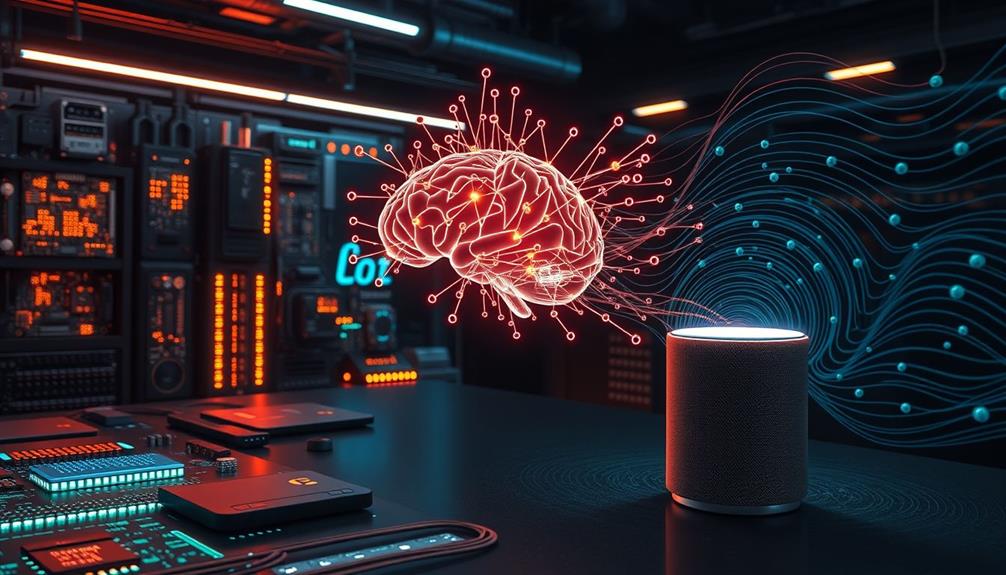
Machine learning serves as the backbone of Alexa's ability to understand and respond to your commands effectively. By leveraging machine learning, Alexa continuously refines its intent recognition capabilities through real-time interactions. When you speak, the system employs advanced speech recognition to break down your commands into structured data. This allows it to identify specific requests and associated entities, such as dates or locations, especially in travel inquiries.
Additionally, as cybersecurity concerns grow, ensuring the security of voice assistants becomes increasingly important to protect user data and privacy, reflecting the need for effective defense strategies in the digital age.
To improve its understanding of natural language, Alexa utilizes statistical modeling combined with natural language processing (NLP). This combination enables the system to interpret user intents from various speech patterns and sentence structures, enhancing its context comprehension. Every time you interact with Alexa, it learns from your input. Feedback loops help the system identify mistakes, leading to an improvement in the capabilities of intent recognition over time.
As more data is processed, machine learning algorithms enhance their performance, allowing Alexa to recognize a growing percentage of spoken words accurately. Recent assessments show that systems like Google's speech recognition have achieved up to 95% accuracy, illustrating the significant advancements in this technology, which directly benefits your experience with Alexa.
Contextual Speech Recognition Adaptation
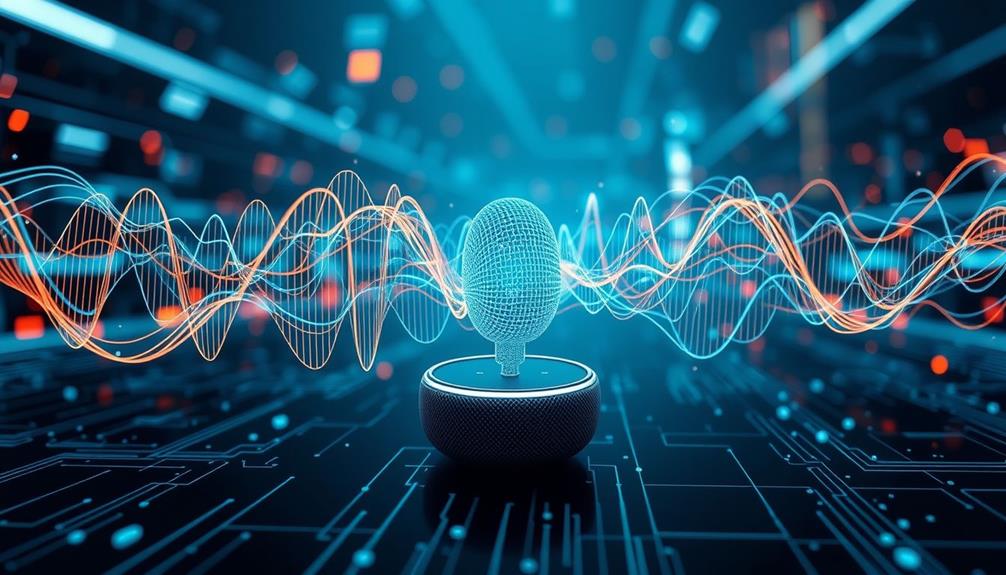
Contextual speech recognition adaptation is an essential feature that enhances Alexa's ability to understand follow-up commands in conversation. This technology greatly improves speech recognition accuracy, especially during follow-up questions. By creating contextual vectors from user dialogue, Alexa reduces error rates by up to 26%. This improvement is similar to how air purifiers improve indoor air quality by filtering out pollutants and allergens.
Here's how it works:
- Contextual Adaptation: Discards stale data to maintain relevance.
- User Dialogue: Utilizes vector representations for clarity in interactions.
- Background Noise Filtering: Leverages acoustic properties to improve recognition in various environments.
- Natural Language Processing: Helps Alexa understand the nuances of your speech.
- Follow-Up Questions: Retains context for smoother conversations.
With contextual adaptation, Alexa processes only the relevant information, ensuring that your commands and questions are answered accurately. This technology allows for a more seamless interaction, as it can recall previous context to make sense of your current request.
In a busy environment, its ability to filter background noise enhances performance, making it easier for you to communicate effortlessly. Overall, this feature not only streamlines user interaction but also elevates the overall experience with Alexa.
Privacy and Ethical Considerations

When you use Alexa, it's important to take into account how your voice data is recorded and stored, raising privacy concerns.
The rise of e-commerce and the increasing reliance on digital payment processing make understanding these privacy implications even more essential, as credit card security measures become increasingly crucial.
You might appreciate the convenience of a voice assistant, but this comes with ethical implications regarding how your data is handled.
Being aware of these issues can help you make informed choices about your privacy and the technology you use.
Data Privacy Concerns
Many users enjoy the convenience of voice assistants like Alexa, but this ease of use comes with significant data privacy concerns. These devices continuously listen for wake words, which raises questions about how and when your voice commands are recorded. Once captured, your audio clips are sent to cloud servers for processing, making data privacy a critical issue.
Background checks, like those conducted by employers, also reveal the importance of safeguarding personal information, as negative implications can arise from data misuse and breaches background check protocols.
Consider the following points:
- Voice assistants can record voice commands even when you're unaware.
- Users should regularly review and delete their voice history to maintain privacy.
- Third-party app permissions can access your data, potentially increasing exposure.
- Legal frameworks are evolving to address data handling and surveillance.
- Instances of recorded audio misuse highlight the need for robust privacy measures.
To mitigate concerns, you can disable voice recording features and maintain user control over your personal data.
Staying informed about privacy measures can help you navigate the trade-off between convenience and potential intrusions. Ultimately, being proactive about data privacy guarantees that your experience with voice assistants remains secure and tailored to your preferences.
Ethical AI Usage
The rise of voice assistants like Alexa has sparked an important conversation about ethical AI usage, particularly concerning privacy and user rights. As these devices record your interactions and send data to cloud servers, the potential for surveillance risks becomes apparent.
This concern is similar to the dynamics observed in relationships with narcissistic individuals, where manipulation and control can lead to a lack of transparency and emotional connection. It's vital to be aware of how your data is handled, focusing on transparency, user consent, and the implications of AI decision-making the impact on relationships.
To enhance your privacy, consider disabling voice recording features, regularly reviewing and deleting your voice history, and being cautious about third-party app permissions connected to your voice assistant.
While the convenience of voice assistants is undeniable, it often comes at the cost of user privacy, highlighting a trade-off that deserves careful consideration.
Ethical AI usage involves ongoing dialogue about the ramifications of voice technology on user autonomy and data security. You need to stay informed about how your language and requests shape the technology's learning processes.
Conclusion
To conclude, Amazon's Alexa combines advanced technology to create a seamless voice assistant experience. Did you know that over 100 million Alexa devices have been sold worldwide? That's a proof of how much people enjoy the convenience of voice-activated assistance. By understanding how signal processing, natural language processing, and machine learning work together, you can appreciate the impressive capabilities of Alexa and other voice assistants, making your daily tasks easier and more efficient.
